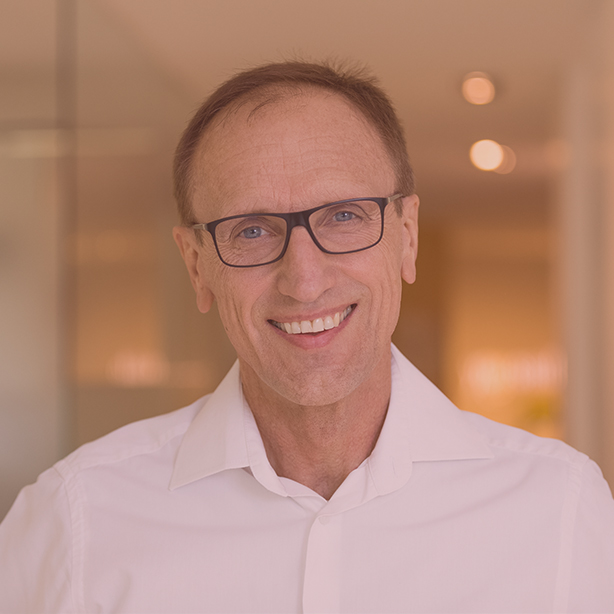

4th Congress of the Balkan Association of Orthodontic Specialists
Post-Congress course - EXPANDING THE LIMITS. BONE-BORN EXPANSION OF MAXILLA
Expanding the limits
Bone-borne expansion of maxilla
A great smile is the most common desire expressed by most patients before orthodontic treatment. But the underlying anatomical structures do not always allow this. There are possibilities but also limits within the alveolar envelope for dental expansion. Beyond these limits relapse and periodontal damage might be expected. Widening the skeletal base leads to simplified and accelerated dental treatment with stable results and a pleasing appearance. Pure bone borne miniature expanders anchored on orthodontic mini-implants allow maxillary expansion without dental side effects or the need for surgical assistance even in mature adults.
Program
New ways to more space in modern orthodontics
Heinz Winsauer, Austria
Today’s orthodontics has made major advances with respect to the most effective, compliance free and invisible treatment options. This leads to fast and stable results with a reduced need for extractions. A key to success is skeletal anchorage in the anterior palate, which is a safe region for placing orthodontic mini-implants. Various treatment options, but especially distalization/mesialization of buccal segment teeth and maxillary expansion are possible. In pre-adolescents and adolescents the Top Jet distalizer and the Hybrid Hyrax or the MICRO2 expander seem to complement to each other as the same orthodontic miniimplants
can be used in consecutive stages of treatment. Thus more than 10 mm of space may be readily gained if needed. Thereafter these two mini-implants can then be used to attach a MICRO-transpalatal arch for retention.
The MICRO-4 or 6 expander is a pure bone-borne orthodontic mini-implant supported expander used in older adolescents and adults. More than 6 years of clinical use, in over 200 adult patients, demonstrates excellent results in maxillary expansion. In most cases surgical assisted maxillary expansion can be avoided (17-23 years 100% No-SARPE, 23-33 years 91% No-SARPE, 34-57 years 60% No-SARPE). This technique of expansion, without any loss of anchorage, improves the facial profile and smile, facilitates breathing and relieves strain in the periodontal tissues. The basis for this success is the rigid appliance construction and a polycyclic, force controlled expansion protocol.
Creating between 4-11 mm of space in the anterior mandible has become a routine procedure with the MMDO-hinge expander. This pure tooth-borne appliance does not require surgical insertion but enables strictly parallel opening of the median mandibular distraction zone, without expanding the condyles. This is combined with minimal invasive surgery.
Another compliance free orthodontic appliance, is the Sagittal Maxillary Stretch appliance that has proved very effective for compliance-free late
Class III treatment and is a viable option to a protraction facemask. It is invisible, compliance free and stimulates maxillary sagittal growth.
All these appliances offer new treatment possibilities by widening the skeletal bases. Construction principles, clinical decisions and step by step handling of these appliances will be presented, together with clinical photographs showing the treatment of a variety of malocclusions.

HEINZ WINSAUER, Orthodontics University of Graz, Austria
Dr. Winsauer received his degree in general medicine from the University of Innsbruck in 1980, and completed four years of clinical training in general and intensive medicine. From 1985 he began his training at the Dental University in Innsbruck and then focused on three years of orthodontic training.
He has had a private practice in Bregenz, Austria, since 1990. In 1998 he was the first Austrian orthodontist to pass the European Board exam in private practice, and since then he has been an active member of the European Orthodontic Society. Dr. Winsauer is the author and co-author of 15 peer-reviewed publications and four orthodontic textbook chapters. He is a speaker at numerous international lectures (including a precongress course at EOS 2017) and holds eight international orthodontic patents.
Dr. Winsauer is a part-time lecturer at the universities of Bern and Geneva. An excellent collaboration with the University of Graz (Austria) and Catalonia (Spain) enabled a number of joint research projects in orthodontics. His research focuses on: maxillary expansion in adults without surgical support, orthodontic treatment with bone-supported anchoring and mandibular distraction osteogenesis in the midline.
back to 4th Congress of the Balkan Association of Orthodontic Specialists